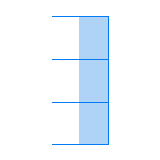A value-economics tool that helps teams analyze value creation, value capture, and pricing decisions.
What Value Stick Model Is About
Have you ever wondered why people are willing to pay more for one product over another, even when both seem similar?
Many companies struggle to set the right price, understand customer value, or figure out how much profit they should make.
The Value Stick model helps answer these questions. Developed by Professor Felix Oberholzer-Gee from Harvard Business School, this model focuses on what customers are willing to pay and what suppliers or employees are willing to accept.
Core Concept of the Value Stick Model
The Value Stick is a visual tool made up of four parts:
Willingness to Pay (WTP)
The highest or maximum price a customer is willing to pay for your product or service. If your product is valuable or unique, WTP goes up since it's delighting the customer.
Price
What the customer actually pays. This also defines the firm margin.
Cost
What it costs the company to produce the product or service.
Willingness to Sell (WTS)
The minimum price at which the company is willing to accept.
If working conditions or supplier relationships improve, WTS can go down, it means the company would like to accept a lower price since the overall cost goes down.


